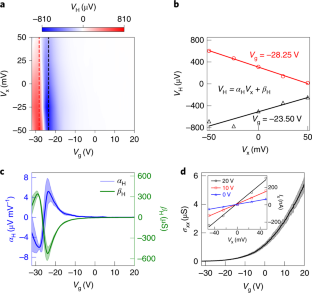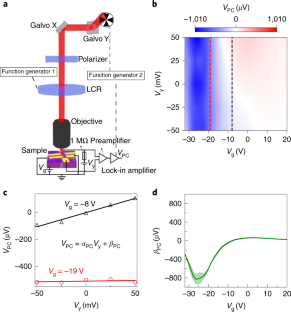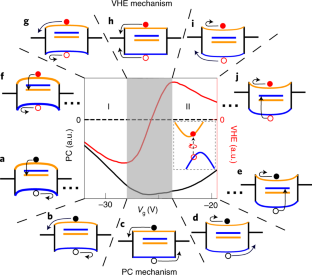A room-temperature gate-tunable bipolar valley Hall effect in molybdenum disulfide/tungsten diselenide heterostructures
20/01/2022 Two-dimensional semiconductors have a valley degree of freedom that could be used as a platform for future optoelectronic devices. The valley Hall effect, caused by electrons in different valleys having opposite Berry curvatures, is important for making such devices, but has only been reported with plasmonic structures or at cryogenic temperatures, limiting practical application. Here we report the observation of the valley Hall effect at room temperature in a molybdenum disulfide/tungsten diselenide van der Waals heterostructure. We show that the magnitude and polarity of the valley Hall effect in the heterostructure are gate tunable, which can be attributed to the contribution of the opposite valley Hall effect from electrons and holes in different layers. We use this gate tunability to create a bipolar valleytronic transistor.Fig. 1: VHE at room temperature.

Fig. 2: Gate-dependence measurement of VHE and longitudinal conductivity at 240 K.

Fig. 3: Gate dependence of PC at 240 K.

Fig. 4: Gate-dependence mechanism of VHE and PC.

Source: https://go.nature.com/3qyDiT2, via Nature

